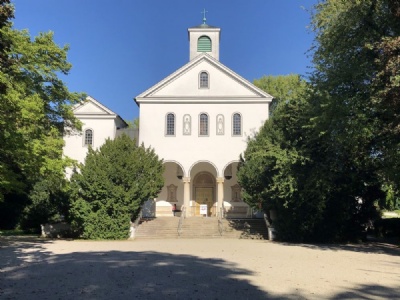München – Ostfriedhof
As opponents of the Nazis died or were killed, the Nazis had to get rid of their bodies. This was initially done by using existing crematoriums in nearby towns. Such a crematorium was laid at Ostfriedhof in Munich. Between 1933 and 1945, the crematorium was used to cremate bodies who had died in the hands of the Nazis. For example those who had been killed during the Long night of the knives in June 1934, about 4,000 prisoners from the concentration camps Dachau, Auschwitz and Bucenhwald and people who had been killed in the Nazi T4 program. The use of crematoriums outside concentration camps was not uncommon before the concentration camps got their own crematorium starting in 41/42.
On October 16, 1946, at the main Nuremburg trial, eleven Nazi leaders were sentenced to death by hanging. The executions were carried out in a gymnasium and first out was supposed to be Hermann Goering. But Goering cheated the hangman by committing suicide before his execution. The other ten executed were Hans Frank, Wilhelm Frick, Alfred Jodl, Ernst Kaltenbrunner, Wilhelm Keitel, Joachim von Ribbentrop, Alfred Rosenberg, Fritz Sauckel, Arthur Seyss-inquart and Julius Streicher. After the sentences been executed the bodies were placed in coffins (also Goering) and was secretly transported to Munich and the crematorium at Ostfriedhof where they were cremated. A twelfth empty coffin was also brought there to confuse any witnesses. The ashes were then spread in the river Isar. A rumor was spread afterwards that the bodies were cremated in the crematorium in Dachau, but that is not true.
Current status: Preserved with monument (2020).
Address: St. Martin Strasse 60, 81541 München.
Get there: Metro to St. Martin Strasse Station.
Follow up in books: Tusa, Ann & John: Nuremberg Trial (1996).


For a long time it was a ill-concealed secret where the bodies had been cremated because there was a concern that the place would become a pilgrimage site for sympathizers and curious tourists. Since the beginning of the 2000s, it’s not so secret any more and any problems with unwelcome visitors hasn’t occured. The Monument adjacent to the crematorium is dedicated to Nazi victims cremated between 1933 and 1945.